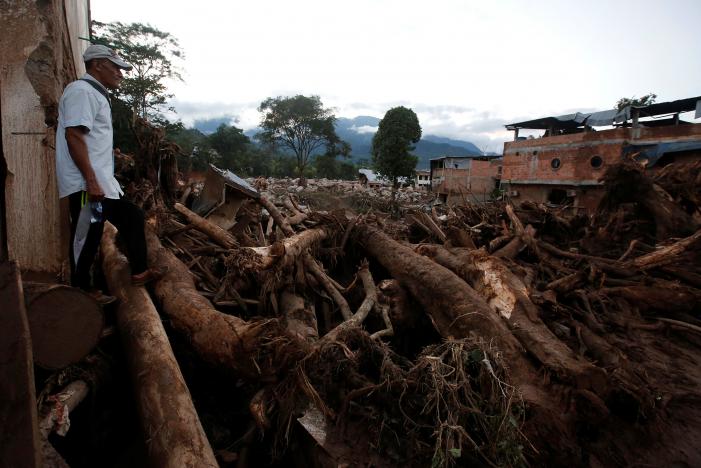Over 200 people were killed in mudslides in southern Colombia that have also killed scores in Peru and Ecuador.
Rescuers clawed through piles of mud and twisted debris Sunday in search of survivors after violent mudslides destroyed homes. Hundreds of people have also been injured.
The army said in a statement that 254 people were killed, 400 people had been injured and 200 were missing. More than 1,100 soldiers and police officers were called in to help dig people out in 17 affected neighborhoods.
They were the latest victims of deadly floods and mudslides that have struck the Pacific side of South America over recent months.
In the southwestern Colombian town of Mocoa a sudden surge of mud and water swept away homes, bridges, vehicles and trees, leaving piles of wrecked timber buried in thick mud.
The mudslides slammed Mocoa late Friday after days of torrential rain in the Amazon basin area town of 40,000.
“The latest information we have is that there are 206 people confirmed dead, 202 injured, 220 missing, 17 neighborhoods hit hard,” Colombian Red Cross chief Cesar Uruena told AFP.
On Sunday, President Juan Manuel Santos is set to return to the town, the capital of Putumayo department, with cabinet ministers to supervise rescue efforts in the heavily forested region.
Santos met with rescuers and survivors in Mocoa on Saturday, and declared a public health and safety emergency to speed up rescue and aid operations.
Some 130 millimeters (5 inches) of rain fell Friday night, president Santos said. “That means 30 percent of monthly rainfall fell last night, which precipitated a sudden rise of several rivers,” he said.
He promised earlier on Twitter to “guarantee assistance to the victims of this tragedy, which has Colombians in mourning.”
“Our prayers are with the victims and those affected,” he added.
One thousand emergency personnel, including soldiers and local police, were helping the rescue effort. Mocoa was left without power or running water, and there were reports of people looting stores in search of bottled water.
“There are lots of people in the streets, lots of people displaced and many houses have collapsed,” retired Mocoa resident Hernando Rodriguez, 69, said by telephone.
“People do not know what to do… there were no preparations” for such a disaster, he said.
Weather authorities said light rains were expected in the area on Saturday night and Sunday.
Photos posted on Twitter by the air force showed neighborhood streets filled with mud and damaged houses, while videos on social media showed residents searching for survivors in the debris and struggling to move through waist-high water during the night.
Several deadly landslides have struck Colombia in recent months.
A landslide in November killed nine people in the rural southwestern town of El Tambo, officials said at the time.
A landslide the month before killed 10 people in the north of the country.
Climate change can play a big role in the scale of natural disasters, such as this one, a senior UN official said.
“Climate change is generating dynamics and we see the tremendous results in terms of intensity, frequency and magnitude of these natural effects, as we have just seen in Mocoa,” said Martin Santiago, UN chief for Colombia.
